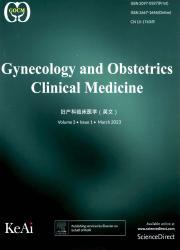评估蔓越莓 A 型原花青素对外阴阴道念珠菌病的治疗效果:随机对照临床干预研究
Q4 Medicine
引用次数: 0
摘要
本研究旨在评估蔓越莓提取物 A 型原花青素(A-PACs)治疗和预防外阴阴道念珠菌病(VVC)的有效性和安全性:该研究是一项开放、随机、平行设计的研究。该研究采用随机、平行设计的方法,从医院招募了 300 名符合条件的外阴阴道念珠菌病患者。根据电脑随机生成的名单,所有参与者被随机分为三组。第一组患者接受标准抗真菌治疗(口服单剂量氟康唑 150 毫克,阴道使用咪康唑栓剂 400 毫克,睡前服用,共 3 天);第二组患者在第一组治疗方案的基础上,口服 A-PACs 16 毫升,每天 2 次,共 6 天;第三组患者口服 A-PACs 16 毫升,每天 2 次,共 6 天,阴道使用咪康唑栓剂 400 毫克,睡前服用,共 3 天。第 2 组患者在随访第 7 天时临床痊愈,接受口服 A-PACs 的维持治疗,为期 12 周。与第一组相比,第二组患者的症状明显改善(P<0.05)。Cox 回归分析显示,维持治疗与短期复发无显著相关性(HR 0.44 (0.11, 1.67); p=0.23),但可显著降低长期复发的风险(HR 0.57(0.33,0.99);P<0.05)。该研究显示,蔓越莓汁中的A-PACs与唑类抗生素联合使用,可作为治疗和预防VVC长期复发的新型治疗方案。本文章由计算机程序翻译,如有差异,请以英文原文为准。
Assessing the treatment effect of cranberry type A proanthocyanidins on vulvovaginal candidiasis: a randomised controlled clinical interventional study
This study aimed to evaluate the efficacy and safety of cranberry extracts: A-type proanthocyanidins (A-PACs) in the treatment and prevention of vulvovaginal candidiasis (VVC).An open, randomised, parallel-design study was conducted. A cohort of 300 eligible patients with VVC was recruited from the hospital. All participants were randomly divided into three groups according to a computer-generated randomisation list. Patients in group 1 were treated with standard antifungal therapy (oral single-dose fluconazole 150 mg and vaginal miconazole suppository 400 mg at bedtime for 3 days); patients in group 2 received oral A-PACs 16 mL two times per day for 6 days based on the treatment regimen of group 1; patients in group 3 were given oral A-PACs 16 mL two times per day for 6 days and vaginal miconazole suppository 400 mg at bedtime for 3 days. Patients who were clinically cured at the seventh day of follow-up in group 2 received maintenance therapy by oral A-PACs for 12 weeks.At the seventh day of follow-up, the vaginal mycological results of all patients in group 2 who initially tested positive for pseudohyphae exhibited negative results. The negative conversion rates of fungal spores and blastospores in group 2 were superior to those in both group 1 and group 3. The symptoms of patients in group 2 ameliorated conspicuously compared with those in group 1 (p<0.05). The clinical cure rate of VVC in both group 2 and group 3 was not inferior to group 1. Cox regression analysis showed maintenance therapy was not significantly associated with short-term recurrence (HR 0.44 (0.11, 1.67); p=0.23) but could significantly diminish the risk of long-term recurrence (HR 0.57 (0.33, 0.99); p<0.05).This study revealed that A-PACs in cranberry juice combined with azole antibiotics can be used as a novel therapeutic option for the treatment and prevention of long-term recurrence of VVC.ChiCTR2300076392.
求助全文
通过发布文献求助,成功后即可免费获取论文全文。
去求助
来源期刊

Gynecology and Obstetrics Clinical Medicine
Medicine-Obstetrics and Gynecology
CiteScore
0.70
自引率
0.00%
发文量
35
审稿时长
18 weeks
 求助内容:
求助内容: 应助结果提醒方式:
应助结果提醒方式:


